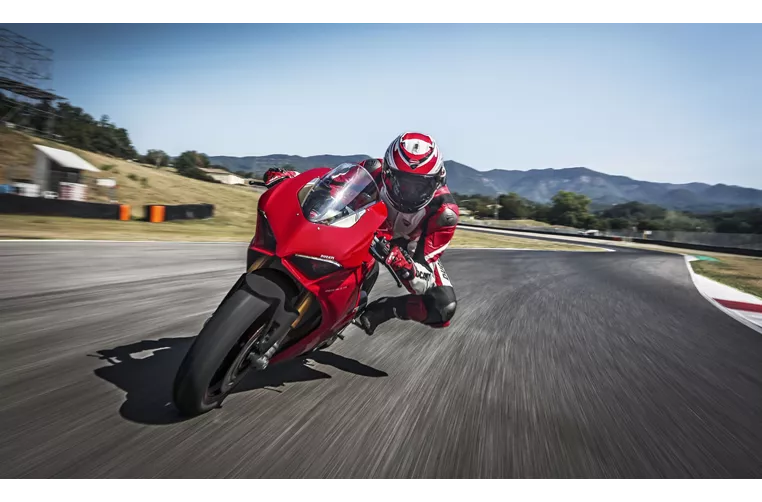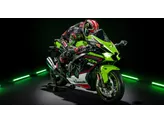Ducati Panigale V4 S 2018 vs. Ducati Panigale V4 2020

Ducati Panigale V4 S 2018

Ducati Panigale V4 2020
Overview - Ducati Panigale V4 S 2018 vs Ducati Panigale V4 2020
The Ducati Panigale V4 S model year 2018 and the Ducati Panigale V4 model year 2020 share many similarities in terms of technical specifications. Both models have a V-type engine with a bore of 81mm and a stroke of 53.5mm. They both produce the same engine power of 214 HP and torque of 124 Nm. The compression ratio, degrees, and number of cylinders are also the same for both models.
In terms of suspension, the Panigale V4 S 2018 is equipped with an Öhlins front suspension and a single swing arm with an Öhlins shock absorber at the rear. On the other hand, the Panigale V4 2020 has a Showa front suspension and a Sachs shock absorber at the rear. Both models offer adjustable compression, preload, and rebound settings for the suspension. The rear suspension is made of aluminum in both models.
Both models have an aluminum frame type called Monocoque, with a rake of 65.5 degrees and a trail of 100mm. The front brakes are double disk with a diameter of 330mm and use radial, monoblock technology from Brembo. Both models also have ABS as an advanced rider assistance system.

Ducati Panigale V4 S 2018
In terms of dimensions and weights, both models have the same front and rear tire width and diameter, wheelbase, seat height, and fuel tank capacity. However, there is a slight difference in weight, with the Panigale V4 S 2018 having a dry weight of 174 kg with ABS and a kerb weight of 195 kg with ABS, while the Panigale V4 2020 has a dry weight of 175 kg with ABS and a kerb weight of 198 kg with ABS.
Both models are equipped with LED headlights as standard equipment.
The strengths of the Panigale V4 S 2018 include its iconic image, excellent brakes, comfortable seating position, impressive lean angle potential, leading electronics package, and impressive engine power. The bike's handling is also praised for its agility and ability to finish corners early and accelerate.
The strengths of the Panigale V4 2020 include its clever electronics, noticeable upgrades from the previous model, and increased accessibility.

Ducati Panigale V4 2020
On the other hand, the weaknesses of the Panigale V4 S 2018 include a seat that can become uncomfortably warm in summer, a seat-tank combination that offers little grip in the braking zone, and stability issues at the limit, requiring caution with tuning measures and discipline with seat position on fast and bumpy sections.
The weaknesses of the Panigale V4 2020 include a small tank from an ergonomic perspective and potential challenges with straight-line driving at high speeds in wet conditions.
Overall, both the Ducati Panigale V4 S 2018 and the Ducati Panigale V4 2020 offer impressive performance and advanced features. The 2020 model has some noticeable upgrades and improvements, making it more accessible and refined compared to its predecessor. However, both models are highly regarded in the supersport motorcycle segment.
Technical Specifications Ducati Panigale V4 S 2018 compared to Ducati Panigale V4 2020
Pros and Cons in comparison
Pros and Cons in comparison
Ducati Panigale V4 S 2018

The S version, on the other hand, is recommended for both road and racing riders. If the bike is ridden more ambitiously by a racer on the race track, the suspension will maintain its performance longer than with the basic version, whereby a slight adjustment of the front spring rate (for racers) is recommended. The lighter wheels have a noticeable effect on the handling. It is unbelievable to what a high level of innovation and technology in motorbike construction this bike has been raised. I have never experienced electronics that respond so sensitively.
Ducati Panigale V4 2020

The conclusion is very easy for me. Ducati has made an "already almost perfect motorbike" even better without changing anything in a negative way. Although riding on the road with this radical fairing probably causes a stir and one or two riders find it uncomfortable, they obviously feel more comfortable with it on the race track. You get a motorbike "out of the box" that resembles a Superbike World Championship bike more than ever. I also believe that the V4 2018 owner is quite capable of improving his lap times with the 2020 version. My tip: if you take care to enlarge the tank or make it more grippy, you could go over the centre even more with your hull.
Price Comparison Avarage Market Price Ducati Panigale V4 S vs Ducati Panigale V4
There are a few key differences between a Ducati Panigale V4 S 2018 and a Ducati Panigale V4 2020. In terms of price, the actual average price of a Ducati Panigale V4 2020 is about 81% higher. Compared to Ducati Panigale V4 2020 there are less Ducati Panigale V4 S 2018 bikes available on the 1000PS.de Marketplace, specifically 5 compared to 6. It takes less time to sell a Ducati Panigale V4 S with 97 days compared to 100 days for a Ducati Panigale V4. Since model year 2018 1000PS.de editors have written 21 reviews for the Ducati Panigale V4 S and 18 reviews for the Ducati Panigale V4 since model year 2018. The first review for the Ducati Panigale V4 S was published on 11/5/2017 and now has more than 131,500 views. This compares to more than 131,500 views for the first review on Ducati Panigale V4 published on 11/5/2017.

















